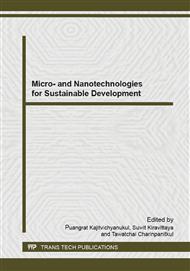[1]
Qigen Wang, Ranran Peng, Changrong Xia, Wei Zhu, Huanting Wang, Characteristics of YSZ synthesized with a glycine-nitrate process, Ceramics International. 34 (2008) 1773-1778.
DOI: 10.1016/j.ceramint.2007.06.003
Google Scholar
[2]
Tianyou Peng, Xun Liu, Ke Dai, Jiangrong Xiao, Hiabo Song, Effect of acidity on the glycine-nitrate combustion synthesis of nanocrystalline alumina powder, Materials Research Bulleten. 41 (2006) 1638-1645.
DOI: 10.1016/j.materresbull.2006.02.026
Google Scholar
[3]
Xiaoming Guo, Dongsen Mao, Guanzhong Lu, Song Wang, Guisheng Wu, Glycine-nitrate combustion synthesis of CuO-ZnO-ZrO2 catalysts for methanol synthesis from CO2 hydrogenation, Journal of Catalysis. 271 (2010) 178-185.
DOI: 10.1016/j.jcat.2010.01.009
Google Scholar
[4]
V.D. Zhuravlev, V.G. Bamburov, A.R. Beketov, L.A. Perelayaeva, I.V. Baklanova, O.V. Sivtsova, V.G. Vasil`ev, E.V. Vladimirova, V.G. Shevchenko, I.G. Grigorov, Solution combustion synthesis of a-Al2O3 using urea, Ceramics International. 39 (2013).
DOI: 10.1016/j.ceramint.2012.07.078
Google Scholar
[5]
J.C. Toniolo, M.D. Limo, A.S. Takimi, C.P. Bergmann, Synthesis of alumina powder by the glycine-nitrate combustion process, Materials Research Bulleten. 40 (2005) 561-571.
DOI: 10.1016/j.materresbull.2004.07.019
Google Scholar
[6]
Tianmin He, Qiang He, Nan Wang, Synthesis of nano-sized YSZ powders from glycine-nitrate process and optimization of their properties, Journal of Alloys and Compounds. 396 (2005) 309-315.
DOI: 10.1016/j.jallcom.2005.01.008
Google Scholar
[7]
A.V. Vlasov, I.R. Mukhametdinov, E.I. Denisova, V.V. Kartashov, I.V. Chernetskiy, Strengthening of corundum ceramic with additions of nanopowders, J. Refractories and Industrial Ceramics. 5, No 2 (2010) 104-106.
DOI: 10.1007/s11148-010-9268-7
Google Scholar
[8]
V.V. Kartashov, E.I. Denisova, A.V. Vlasov, D. K Aleshin, A.A. Blinnichev, High-strength ceramic based on zirconium dioxide: preparation and properties, J. Refractories and Industrial Ceramics. 51, No 4 (2010) 267-269.
DOI: 10.1007/s11148-010-9303-8
Google Scholar
[9]
V.V. Kartashov, A.R. Beketov, A.V. Vlasov, Nanomodified Oxide Ceramic Materials, J. Theoretical Foundations of Chemical Engineering. 44, No 4 (2010) 508-510.
DOI: 10.1134/s0040579510040263
Google Scholar
[10]
D.L. Rakhmankulov, I.H. Bikbulatov, N.S. Shulaev, S. Yu. Shavkunova, Microwave radiation and the intensification of chemical processes, Chemistry, Moscow, (2003).
Google Scholar
[11]
D.L. Rakhmankulov, S. Yu. Shavkunova, F.N. Latypova, V.V. Zoryn, Microwave engineering application in laboratory research and industry, Journal of Applied Chemistry. 75 (2002) 1409-1416.
Google Scholar


